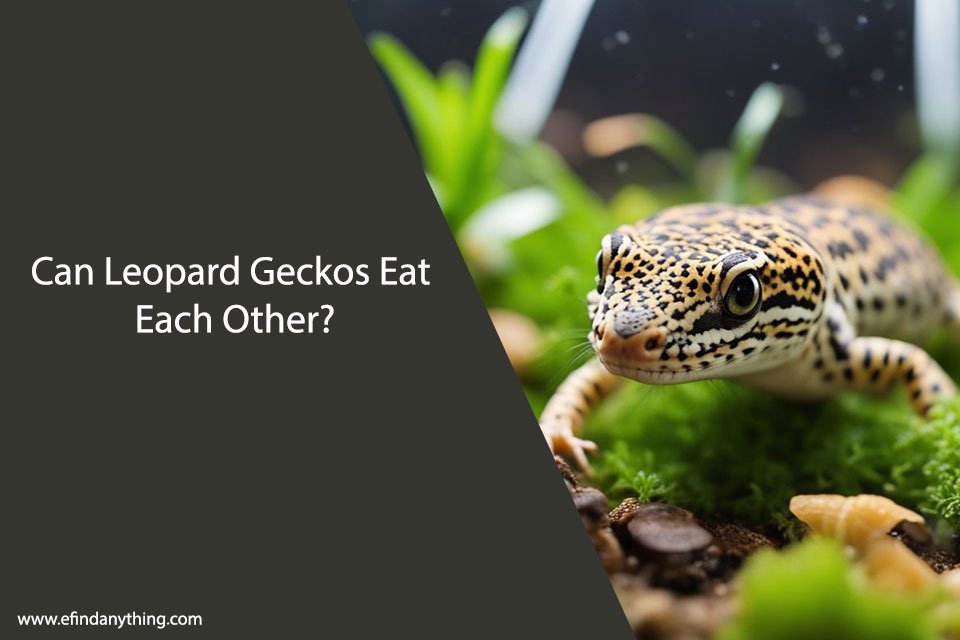Leopard geckos are fascinating creatures with unique behaviors that are interesting to observe. As a pet owner, it’s important to know what these reptiles can and cannot eat, especially when it comes to their own species. One question that often arises is whether leopard geckos can eat each other.
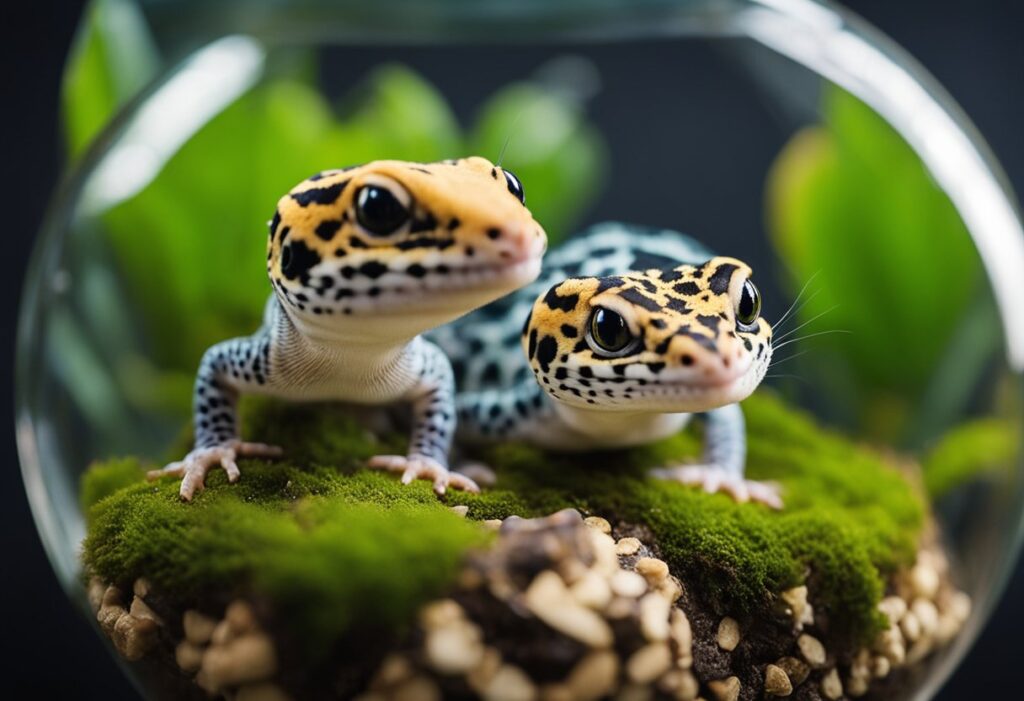
The answer is yes, leopard geckos can eat each other. In fact, cannibalism is not uncommon among these reptiles, particularly when they are housed together in captivity. This behavior is more likely to occur if the geckos are not properly fed or if they are stressed due to overcrowding or other environmental factors. As such, it’s essential to be aware of the risks and take appropriate measures to prevent this behavior from occurring.
If you’re a leopard gecko owner or considering getting one, it’s important to understand their dietary needs and behavior to ensure a healthy and happy pet. In this article, we will explore the topic of leopard gecko cannibalism in depth, discussing the reasons behind this behavior and how to prevent it. By the end of this article, you’ll have a better understanding of how to care for your leopard gecko and keep them safe from harm.
Table of Contents
Leopard Gecko Diet Overview
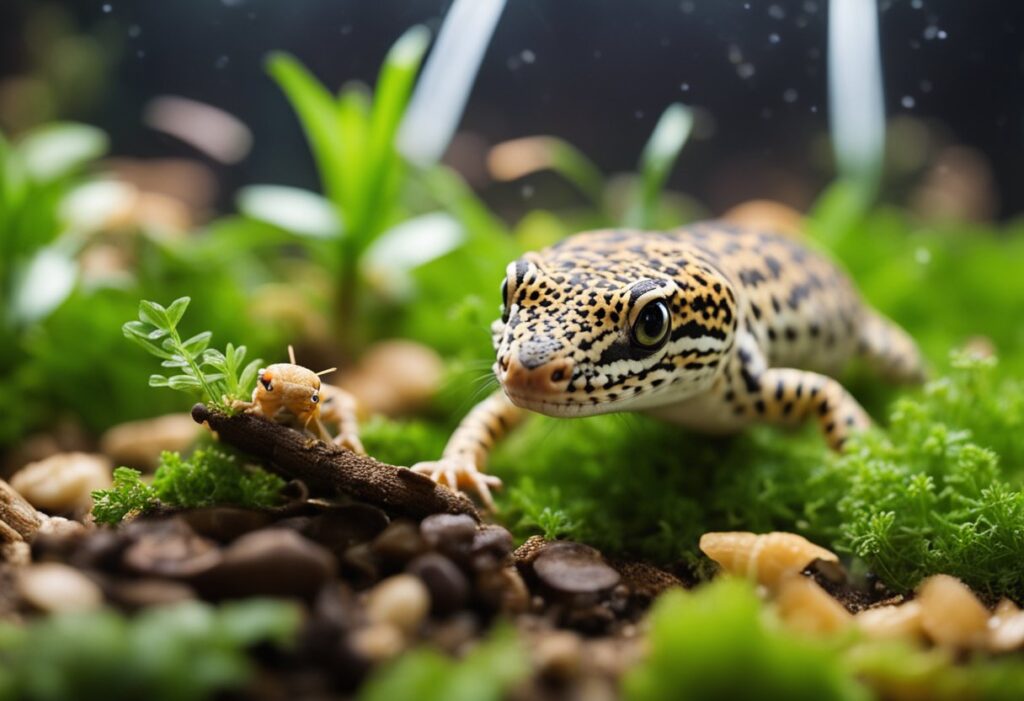
Leopard geckos are insectivores, which means they primarily eat insects. In captivity, they are usually fed a diet of crickets, mealworms, and occasionally other insects such as waxworms, superworms, and roaches.
It is important to provide a variety of insects to ensure that leopard geckos receive a balanced diet. Feeder insects should be gut-loaded, which means they are fed a nutritious diet before being fed to the gecko. Dusting the insects with a calcium and vitamin supplement is also important to prevent nutritional deficiencies.
Leopard geckos should not be fed vegetables, fruits, or other plant-based foods as they are not able to digest them properly. Additionally, it is not recommended to feed leopard geckos live prey that is too large for them to consume as it can lead to health issues and even death.
Overall, providing a varied and nutritious diet is essential for the health and wellbeing of leopard geckos.
Cannibalistic Behavior in Leopard Geckos
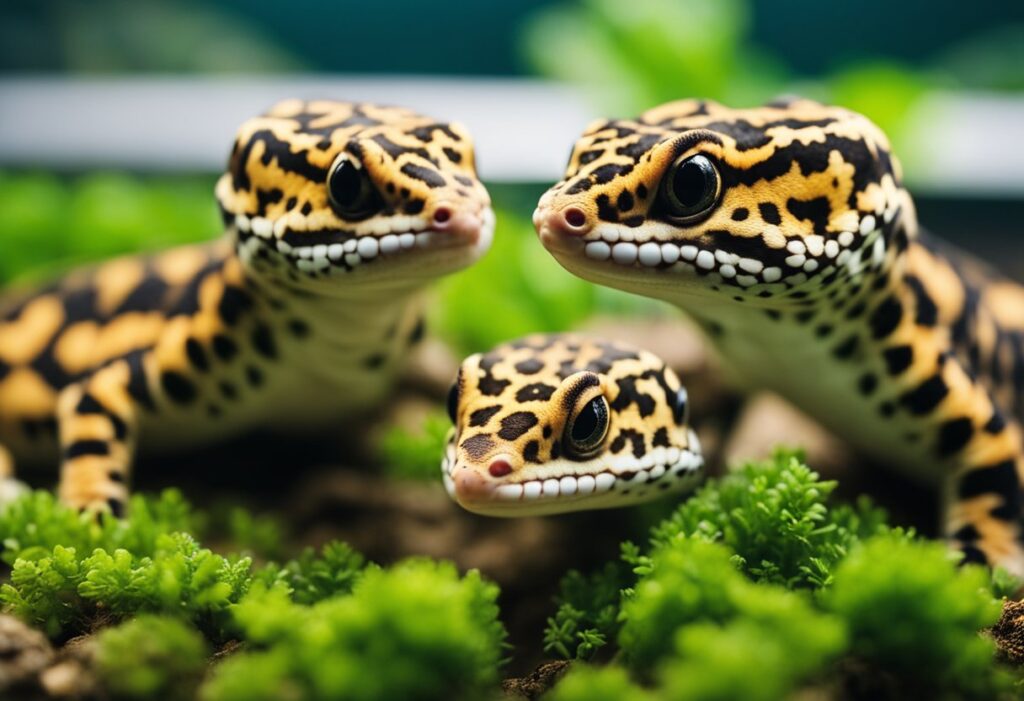
Leopard geckos are known for their docile nature and are popular pets among reptile enthusiasts. However, under certain conditions, these geckos can exhibit cannibalistic behavior. In this section, we will explore the causes and prevalence of cannibalism in leopard geckos.
Causes of Cannibalism
Cannibalism in leopard geckos can be caused by various factors such as overcrowding, lack of food, and stress. When leopard geckos are kept in a small enclosure with limited space, they may become territorial and aggressive towards each other. This can lead to cannibalism, where one gecko may attack and eat another gecko.
Another cause of cannibalism in leopard geckos is the lack of food. When there is a shortage of food, leopard geckos may turn to cannibalism as a means of survival. This is more common in younger geckos who are still developing and require a higher amount of food.
Stress is also a contributing factor to cannibalism in leopard geckos. When geckos are exposed to stressful situations such as loud noises or frequent handling, they may become agitated and aggressive towards each other. This can lead to cannibalistic behavior, where one gecko may attack and eat another gecko.
Prevalence and Observations
Cannibalism in leopard geckos is not a common occurrence, but it can happen under certain conditions. It is more prevalent in younger geckos who are still developing and require a higher amount of food. Observations have shown that cannibalism usually occurs when there is a shortage of food or when geckos are kept in small enclosures with limited space.
To prevent cannibalism in leopard geckos, it is important to provide them with a spacious enclosure and adequate food. It is also important to avoid exposing them to stressful situations and to monitor their behavior closely. If cannibalistic behavior is observed, it is recommended to separate the geckos immediately to prevent further harm.
In conclusion, cannibalism in leopard geckos can be caused by various factors such as overcrowding, lack of food, and stress. While it is not a common occurrence, it is important to be aware of the causes and take necessary steps to prevent it from happening.
Preventing Cannibalism in Captivity
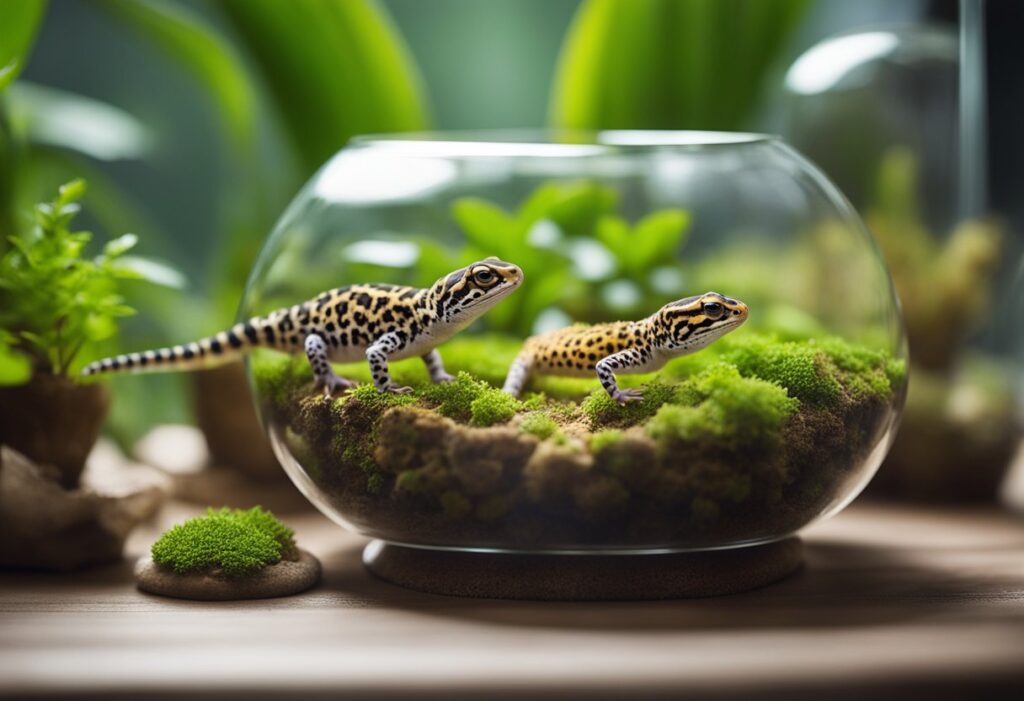
Cannibalism is a common problem among Leopard Geckos, especially when they are kept in captivity. To prevent this issue, we need to ensure that we are providing them with a suitable habitat, feeding them properly, and monitoring their behavior regularly.
Habitat Setup
A proper habitat setup is essential to prevent cannibalism among Leopard Geckos. We should provide them with ample space to move around, hide, and bask. A 20-gallon tank is recommended for a pair of Leopard Geckos. The tank should be furnished with hiding places, basking spots, and a water dish. We should also provide them with a substrate that is easy to clean and digestible.
Feeding Practices
Proper feeding practices are crucial to prevent cannibalism among Leopard Geckos. We should ensure that each gecko is getting enough food to eat. We should feed them separately to avoid competition for food. We should also provide them with a varied diet that includes insects, such as crickets, mealworms, and waxworms. We should avoid feeding them with larger insects that they cannot handle, as this may lead to injuries or death.
Monitoring and Separation
Regular monitoring and separation are essential to prevent cannibalism among Leopard Geckos. We should observe their behavior regularly and look for signs of aggression. If we notice any aggressive behavior, we should separate the geckos immediately. We should also separate them during feeding time to avoid competition for food.
In conclusion, preventing cannibalism among Leopard Geckos in captivity requires a suitable habitat setup, proper feeding practices, and regular monitoring and separation. By following these guidelines, we can ensure that our geckos are healthy and happy.
Health Implications of Cannibalism
When it comes to leopard geckos, cannibalism can have serious health implications. In this section, we will discuss the physical injuries and stress that can result from cannibalism, as well as the potential impact on longevity.
Physical Injuries
Cannibalism can lead to serious physical injuries in leopard geckos. Bites from other geckos can result in open wounds and infections, which can be difficult to treat. In some cases, the injuries may be severe enough to cause permanent damage or even death.
Stress and Longevity
Cannibalism can also cause significant stress to leopard geckos, which can have a negative impact on their overall health and longevity. When geckos are constantly fighting or living in fear of being attacked, they may experience elevated levels of stress hormones, which can weaken their immune system and make them more susceptible to disease.
In addition, the stress of living in a cannibalistic environment can shorten the lifespan of leopard geckos. Studies have shown that animals living in stressful conditions tend to have shorter lifespans than those living in more stable environments.
Overall, it is important to prevent cannibalism in leopard geckos to ensure their health and well-being. This can be achieved by providing adequate space, hiding places, and separate feeding areas for each gecko. If cannibalism does occur, it is important to separate the geckos and seek veterinary care for any injuries.
Breeding and Cannibalism
When it comes to breeding leopard geckos, cannibalism is a potential concern. While leopard geckos are not known for being aggressive towards each other, there are instances where they may view their own kind as prey.
Egg Protection
One of the most common instances of cannibalism in leopard geckos occurs when females lay their eggs. If multiple females are housed together, there is a risk that one may eat the eggs of another. To prevent this, it’s important to provide each female with her own laying box and to separate them during the laying process.
Juvenile Safety
Another potential risk for cannibalism is when juvenile leopard geckos are housed together. As they grow, they may view each other as competition for resources such as food and space. To prevent this, it’s important to provide each juvenile with their own enclosure and to avoid housing geckos of different sizes together.
It’s important to note that while cannibalism can occur in leopard geckos, it is not a common occurrence. By providing proper care and housing, the risk of cannibalism can be minimized.
Ethical Considerations of Captive Care
When it comes to keeping leopard geckos as pets, it’s important to consider the ethical implications of captive care. This includes providing them with proper nutrition, housing, and socialization.
One ethical concern that arises when keeping multiple leopard geckos is the possibility of cannibalism. While leopard geckos are not known to be aggressive towards each other, they may still exhibit territorial behavior and may see smaller or weaker geckos as prey.
To prevent cannibalism, it’s important to house leopard geckos separately unless they are breeding pairs. Even then, it’s important to monitor them closely and separate them if any aggression is observed.
Another ethical consideration is the use of live prey for feeding. While leopard geckos are carnivorous and require live insects for proper nutrition, it’s important to ensure that the prey is not too large for the gecko to consume and that it is killed humanely before being offered to the gecko.
Overall, it’s important to prioritize the well-being of our leopard geckos and provide them with the best possible care in captivity. By considering the ethical implications of captive care, we can ensure that our geckos live happy and healthy lives.
Frequently Asked Questions
What are the risks of housing multiple leopard geckos together?
Housing multiple leopard geckos together can increase the risk of aggression, stress, and injury among the geckos. It can also increase the risk of disease transmission. It is important to provide adequate space, hiding places, and resources for each gecko to minimize these risks.
Can leopard gecko aggression lead to cannibalism?
Yes, leopard gecko aggression can lead to cannibalism, especially if one gecko is significantly smaller or weaker than the other. Cannibalism is a rare but serious behavior that should be prevented if possible.
Is it common for leopard geckos to exhibit biting behavior towards each other?
Biting behavior can occur in leopard geckos, especially during feeding or mating. However, excessive biting or aggressive behavior should be monitored and addressed to prevent injury or cannibalism.
What should be done if a leopard gecko bites another?
If a leopard gecko bites another, it is important to separate them immediately to prevent further injury. The bitten gecko should be monitored for signs of infection or injury and treated appropriately.
How does the temperament of leopard geckos affect their cohabitation?
Leopard geckos have individual temperaments that can vary from docile to aggressive. Aggressive geckos may not be suitable for cohabitation and should be housed separately. It is important to observe the behavior of each gecko and adjust their housing accordingly.
What are the signs of aggressive behavior in leopard geckos?
Signs of aggressive behavior in leopard geckos include tail rattling, hissing, biting, chasing, and fighting. Aggressive behavior should be addressed promptly to prevent injury or cannibalism.

